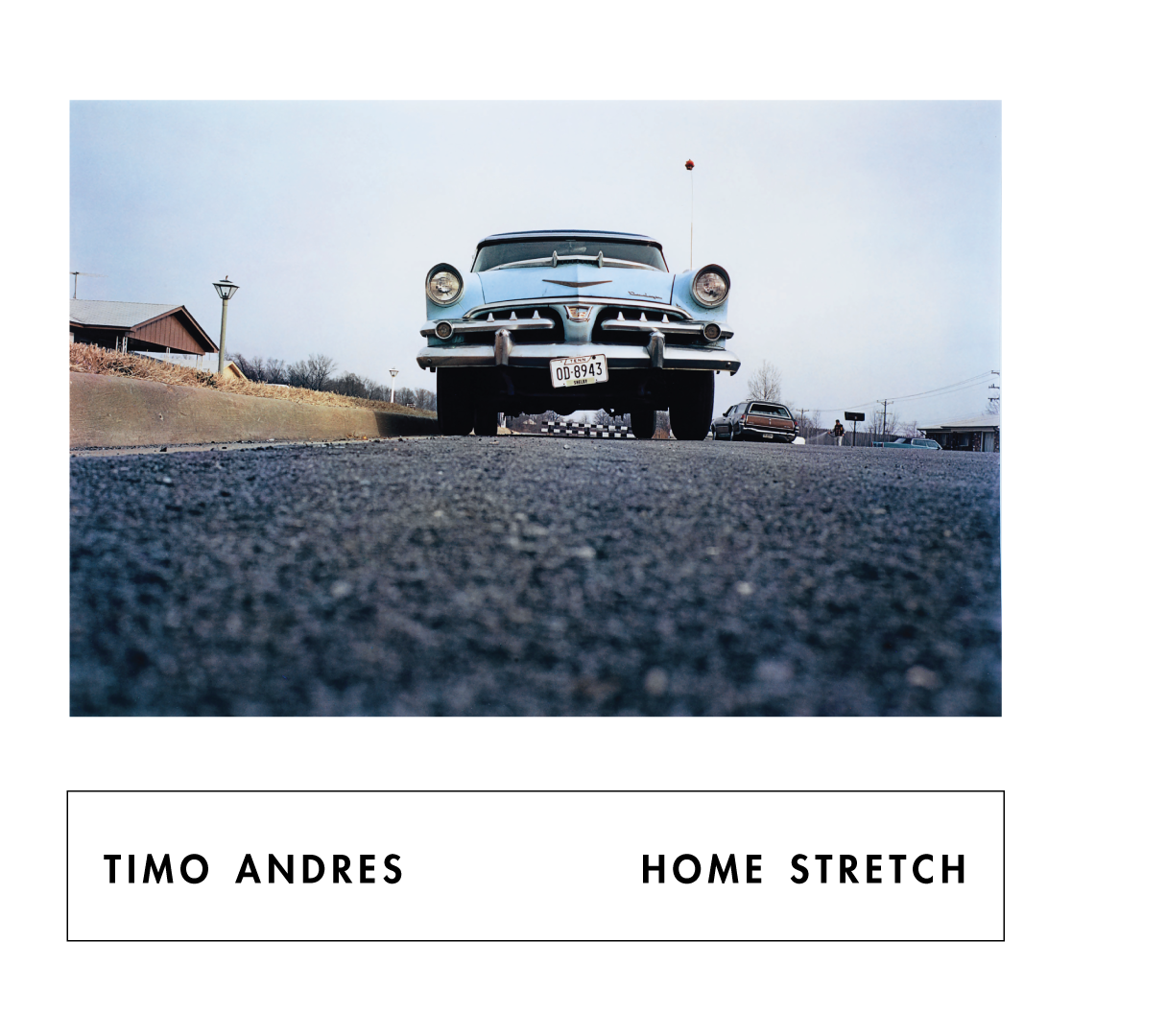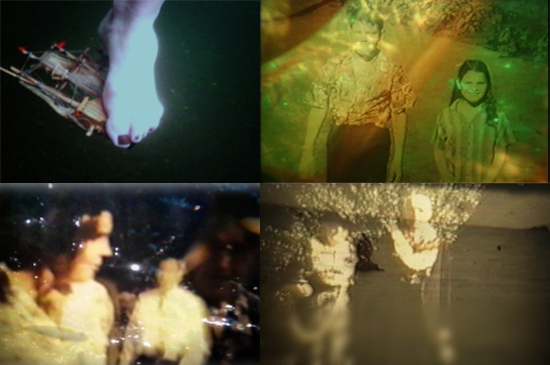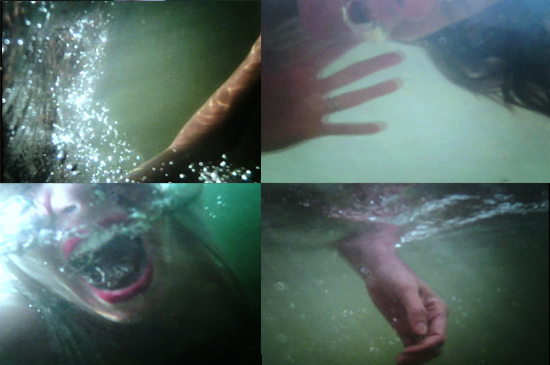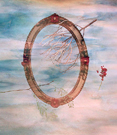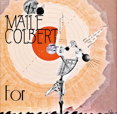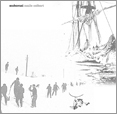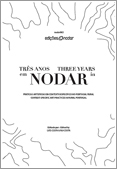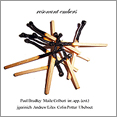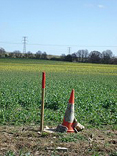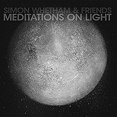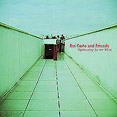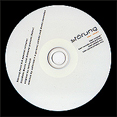Što se dogodi kad Alison Chesley, klasično obrazovana violončelistica, napravi art-punk album? Vrijeme počne nešto ispuštati kroz crve u ljudima.
helenmoney.com/
profoundlorerecords.bandcamp.com/album/arriving-angels
Beautiful Friends at Vacation Vinyl
Political Song
MF live in Cleveland
When Profound Lore announced the release of “Arriving Angels,” the new album from Helen Money, the stage name of cellist and composer Alison Chesley, one of the more unique musicians of this day and age, it both was surprising and totally logical. She was a member of Verbow in the 1990s along with Jason Narducy, was a member of Poi Dog Pondering for a while, worked with Bob Mould, and added her work as a contributor to bands such as Anthrax, Broken Social Scene, MONO, Russian Circles, Plaguebringer, and many others. She was one hell of a hired gun when it came to cello work, but her most fascinating creations came along with her Helen Money project, which highlighted her aggressive, amplified, fucked up string work that was scarier and more riveting than what a lot of people dream up with multiple guitars.
“Arriving Angels” is the third album from Chesley’s Helen Money, and she’s joined by drummer Jason Roeder (Neurosis, Sleep) on what’s already one of the most unique records in January, but one that’s likely still going to hold that distinction when we’re putting up Christmas trees in December (or October, if you’re an asshole). If you’re new to Chesley’s work, then chances are you never heard anyone use the cello in quite this way before. You’re going to think you’re listening to a damn suffocating and dark doom metal record created by a roomful of people working to dump as much fog and chaos as possible from walls of amps. But you’ll be wrong. All of the fire and brimstone on here is Chesley and her cello, sometimes played classically, sometimes offering comfort, but often distorted and mangled like a never-ending nightmare.
There are many moods and atmospheres created on this eight-cut record (recorded and mixed by Steve Albini), and the music here can be absorbed in a number of different settings, from meditation, to studying, to confronting and battling your demons, to simply watching nature outside your window. This mix of classical, ambient, drone, and doom may not, on the surface, seem like something we’d traditionally call metal, but again, I invite the more closed minded out there to expand your thinking. This record very well could be your gateway to stretching out your boundaries and discovering new and exciting things.
Opener “Rift” doesn’t grab you and yank you to the floor. It seeps into the room like a ghost, makes some initial sounds so you know something might be there, before it rises up and takes you. The doomy melodies, dark, chunky playing, and ominous tones make for a provoking, chilling open. “Upsetter” has sweltering, strong work and piercing sounds, and a strange melody loops behind everything else, making this feel like the score to a real-life horror story. Not a slasher film or the likes, but something where a human being melts down from the inside and faces himself or herself as a villain. “Beautiful Friends” is mournful and baroque, with distortion and drone pouring in and filling the room to your knees, and percussion kicking in, adding more drama to the story. “Radio Recorders” opens with a panic of echoes, sort of like an old Voivod song, and despite the muck and grime of the track, there’s a gorgeous light that breaks through the clouds and chaos, offering a glimmer of hope.
“Midwestern Night’s Dream” allows you something of a downhome breather, as Chesley delicately plucks her cello, and the song maintains a simple, quiet aura. The title track then lets the noise rip you apart again, with a breath-taking build, windswept passages, fucked up riffs, and a boiling pot that, just when you think it’s going to burn you, it settles back down. Then it rises back up again just as violently. “Shrapnel” has some more traditional cello playing, deliberate, calculated drumming, and a cool pace that gets you ready for the finisher “Runout,” where melodies bend like rubber, eerie echoes allow your mind to wander through the song, drums kick in to keep your lungs blowing, and eventually cool piano drops tap like an easy rainfall.
This record isn’t going to strike everyone the same, and I’m sure some listeners will be too confused or bewildered to accept it. But “Arriving Angels,” as far as I’m concerned, is an intoxicating, fascinating listen that proves not only is Chesley a disarming force in the metal and extreme music world, but is one of the most inventive and creative in all of music. This is a landmark release for Helen Money and should get her the recognition she deserves not only for what she’s contributed in the past but mostly for what she’s still offering us today. She’s a killer. - Brian Krasman
Helen Money is Alison Chesley and Alison Chesley plays the cello.
Let me amend that.
Helen Money is Alison Chesley and Alison Chesley plays the fuck out of the cello, employing pedals, loops and an idiosyncratically assaultive approach to the instrument in order to liberate it from the shadows of genteel classicism and thrust it (screaming, at times, it seems) into a new and almost wholly unfamiliar light of rock and roll.
Or doom.
Maybe it isn’t doom. Maybe it’s just fucking metal. Post rock? Drone comes to mind, but that’s not right. Maybe it’s just (listenable) experimental. I can’t safely say for certain what genre we need to talk about when we talk about Helen Money since there’s really no manner of context for a cello as bombastic solo instrument I know of in American popular culture (Yo Yo Ma comes to mind but he is light years removed from anything Ms. Chesley’s revealed under this moniker) so let me just say that Arriving Angels is heavy.
Like, really, fucking heavy.
It’s being released on Profound Lore Records (home to Cobalt, Bloody Panda, Krallice, etc.) for fuck’s sake. It was recorded, mixed and engineered by Steve Albini (whose Shellac has tapped Helen Money to open for them more than a few times). It features Neurosis drummer Jason Roeder on four tracks (a first and surprisingly welcome adoption particularly on the ridiculously gorgeous and furious “Radio Recorders”). It slams and roars and squalls and shrieks with the terrifying force of a mammoth in his death throes.
But it breathes.
And that just might be the most affecting aspect of this record. For all the aggression Arriving Angels elucidates, it never forgets its space. It allows tones to sustain, to rest, to open up into silence and, on occasion, to transform into something gentle, pretty even as in the lovely plucking of “Midwestern Nights Dream.”
Too often heavy music rests its presence on relentless and though that tendency can be a thrill (who doesn’t love a little evil?), more times than not, it’s just exhausting. All this screaming’s losing it’s meaning which is why the work of Helen Money is so refreshing. It’s dynamic. Yes, it’s loud and occasionally abrasive but there is a tenderness in Ms. Chesley’s playing that underlies Arriving Angels‘ most caustic of extremes which, when it reveals itself to the listener (and it will), is actually quite breathtaking. - Bandmine.com
There’s something just below the proverbial surface with Helen Money’s Arriving Angels. From the ominous opening notes of the album’s first track, Rifts, to the tightly knit percussion of Jason Roeder (Sleep/Neurosis) serving as a sort of sonic punctuation throughout, Helen Money’s Alison Chesley wields her cello in a way that quietly crushes the boundaries of genre. The age of experimentation is nothing new, and it certainly bodes well for any artist wishing to expound on the possibilities of sound to find their niche in the ever trending metal world. Arriving Angels, however, is not an effort in following any trend as much as it is in unwinding those notions listeners may have regarding exactly what makes music “heavy.” The album cultivates a sound that is inherently challenging and gorgeous. Nothing is given here – only suggested in those pulses and textures which Helen Money creates. Tracks like Radio Recorders and Shrapnel forgo the needless triviality often seen in instrumental rock – instead honing in on those layers of sound at its most minimal and unforgiving.
Stravinksy said “I have not understood a bar of music in my life, but I have felt it,” and I cannot help but think that for all the concern with intricacy of composition in music something gets lost along the way in terms of the actual experience. This album serves as a reminder for the potential of sonic experience and those landscapes, whether bare or lush, that can be created with a single note. Helen Money’s Arriving Angels conjures up an image of the beautiful and bleak – never boiling over into the derivative to which so many otherwise great experimenters fall prey. It’s important to bear in mind that minimalism here does not suggest simplicity. Helen Money’s bare aesthetic is one which serves the composition incredibly well. That thing just below the surface on this record remains unnamed for me. Safe to say that the open-ended questions which Chesley’s cello poses in those equal parts sinister and stunning notes go unanswered in the best of ways. - Steel for Brains
You don't get asked to play on over 150 records without reason, and Alison Chesley has dragged her cello along to play with the likes of Mono, Bob Mould, Anthrax and Russian Circles. In many ways that's really beside the point though, because her project Helen Money is the real triumph.
Arriving Angels will be third album for Helen Money and it's one of the most intriguing and utterly rewarding things I've ever heard.
Mind you, Chesley makes you work for your reward with part of that reward being for withstanding the occasional vicious attack on your musical pendulum with some of the most violent and jarring bow work you will hear. The aptly titled 'Upsetter' is a great example, where she demonstrates the slow torture of discordant and repetitious passages with little relief. While some might knock you about the room with harsh vocals, Helen Money calmly removes your fingernails before painting the puffy raw ends with petrol. This is metal, but not the fun-loving carnival that Apocalyptica create with their cellos.
Consisting almost entirely of cello, with drums on four tracks and a sprinkling of piano in one, there is some similarity with guitar-and-bass metal, after all the source is vibrating strings, but the timbre and the nature of the attack and delay when plucked and struck with horsehair opens a new universe of awesome. Cello is surely the most emotional instrument in its natural form and in the right hands manipulation enhances it even further. This is why metal is its natural home.
Chesley serves us a variety of heartbeats, at times slow, at others full of pace driven by fear. The compositions are astounding. This is due in large part to the use of all of a note's available qualities – something usually lacking in rock and metal. In compositions like 'Midwestern Nights Dream' sequences of plucked notes are allowed to decay fully, while in others the attack is exploited to create a ticking clock.
Many of the most effective techniques are subtle and used very sparingly – perhaps once or twice - and provide great contrast with the electronic looping to create and retain a natural sound and feel, as well as mystery and tension. An example is the slow drumming in 'Shrapnel' which sounds like rimshots but for two beats toward the end that are more like flam. Similarly the slow plodding piano in closer 'Runout' sounds like single notes save for the last couple which are clearly chords with the keys not struck in perfect unison. Whether these are written or a consequence of the performance is irrelevant - Chesley has an amazing understanding of the difference between the warm humanity of the imperfect real-time elements and the cold precision of the loops.
When you listen to this though, you need to get out of any headspace that treats this as a novelty. It's not a must-have because it's a metal album played on cello. It's a must-have because it's a brilliant metal album. - GilbertP echoesanddust.com/
Everything you need to know about Alison Chesley’s relationship with her cello you can glean from YouTube. In one live performance video after another, almost always in rock clubs, the classically trained musician abuses her instrument.
She bows her cello, taps its strings, plucks them like a guitar god in the middle of a hellacious riff. Using a series of pedals she controls with her feet, Chesley can loop and layer melodies, conjuring textures both refined and raw. She looks like a symphony player and sounds like a heavy-metal titan.
That intensity, which often packs the potency of a full band, is on vibrant display on Chesley’s new album under her stage name, Helen Money. Produced by Steve Albini, “Arriving Angels” is her third solo album in six years, and handily her most accomplished.
“I felt like the third record for me would be a big one as a musician and a writer,” Chesley says from Chicago, where she lives, in advance of her show at T.T. the Bear’s on Tuesday. “I felt like if I could write a third record and feel good about it, I’ll feel like this is really what I’m doing for a living. I put a lot of pressure on myself, and I’m glad I did.”
As with her two previous recordings, “Arriving Angels” is an instrumental album that skirts the fringes of various genres. Chesley’s music gets all manner of labels: experimental, rock, doom-metal, classical. Her songs have elements of each style, united only by Chesley’s minimalist compositional skills and a portentous sense of gloom.
“I wasn’t sure what would happen with the songs, but they just ended up getting darker and darker,” she says. “I’ve always liked music that’s interesting and complex and dark, and inwardly I’m a pretty serious person. And I like going to that kind of place. So I guess it makes sense that that’s what would come out.”This was not how Chesley, who’s 53, had imagined her career as a cellist would evolve. During her graduate work at Northwestern University in the early 1990s, Chesley met a fellow musician named Jason Narducy at a coffeehouse where they both worked. They had similar tastes in music — both were into Bob Mould — and Narducy was putting together a band and wanted a cello player. Chesley was hesitant but then realized just how aggressive the music was.
“Usually what people have in mind when they say they want a string player is not the kind of music I want to play,” she says. “It’s often like frosting on the cake. I’m not really interested in that.”
Narducy wanted someone to beef up the sound, and Chesley relished the prospect. They eventually formed an alt-rock band named Verbow, signed to Epic Records, and toured with Mould (who also produced their debut, 1997’s “Chronicles”), Frank Black, and Liz Phair.
Once Verbow dissolved in the early 2000s (and has since sporadically reunited in various formations), Chesley struck out on her own as a studio musician and leader of Helen Money. (She might be the only cellist who has played on records by both thrash-metal gods Anthrax and indie-pop duo the Aluminum Group.)
Helen Money’s latest album features drummer Jason Roeder, from the long-running post-metal band Neurosis, who compares the interplay between his drum parts and Chesley’s cello playing as “pretty much like the relationship between a hammer and a paint brush.”
“The drums lock step in a very rudimentary and simple way on the recording, and the cello work provides most everything else,” Roeder writes in an e-mail. “There is lead cello and rhythm cello, plus a myriad of other [melodies]. Alison ties it together very well.”
Usually, though, Chesley uses just her cello to create heavy soundscapes that are far removed from her classical training. It’s just as well, since she never felt entirely at ease in that realm.
“Classical music is very competitive, and I always got really nervous when I performed. I always had a good sound, but I was never as dedicated to it as other players,” she says. “It was a very imposing thing, practicing six hours a day and trying to get into an orchestra. I think I gravitated away from that.”
“I really feel at home in a rock club with the audience there,” she adds. “That scene is a lot more comfortable and accepting to me. I feel more able to be myself.”
Chesley teaches students to make ends meet, and some of them are aware of just how out there their instructor is.
“I have an 11-year-old [student] who gave me a little card that said, ‘To the most awesome cello teacher ever,’ ” Chesley says. “She watches me on YouTube.”
Given her classical pedigree but also her rock ambitions, Chesley is in a prime position to encourage her students to pursue either path.
“The reason I’m able to play my cello like I want to is because at some point I had to practice, and a teacher made me work on my technique,” she says. “I don’t know if I’ll ever be secure financially, but I’m really glad I’ve experienced all of this. It’s very rewarding to write my own music. I don’t know that I ever would have experienced that if I had gone the other way.” - James Reed
Right of the bat, its should be noted Arriving Angels’ is heavy. Not Drop C, high-gain heavy, but bottom of the sea, weight of the ocean crushing you surrounded by darkness heavy. The thick, meaty strokes Money uses are both silky smooth and pitch perfect. Arriving Angels’ uses a combination pedals and looping to create this dense wall of sound to great effect, particularly in the title track “Arriving Angels” which has Money using some well meshed layers of sound and fitting them into her vision appropriately. This is minimalistic doom to the highest degree as naught but a cello and drums are employed throughout the record. This approach serves the tone well as its hard to imagine how any sort of electronic synth or effect could have supported this ultra-dark atmosphere. The inclusion of Roeder on drums serves as another testament to Money’s sharp focus on her vision and proves to be the perfect match. The drums hit extremely hard and provide good juxtaposition for the sound of the cello. While only showing up on four tracks, the punching drums enhance the mood immensely while never overpowering or drowning out the focus of the record, the cello.
Inherent in this record is the monotony that comes with such atmospheric albums. Roeder’s portions do break up this monotony, especially in the fast-paced “Radio Recorders” or the gradual build-up conclusion to “Shrapnel”. The sheer novelty of Arriving Angels’ is enough to give this a whirl and while this slow-burning ride won’t turn you to the dark side, those already swayed will find another good reason to stay. - Commander Sam Vimes
Helen Money takes the cello to new territory Boston Globe
Show Preview Chicago Tribune
Arriving Angels – Album Review Boxx Magazine
Arriving Angels – Album Review Last Rites
Arriving Angels – Album Review New Noise Magazine
Recorders
5. Midwestern Nights Dream
6. Arriving Angels
7. Shrapnel
8. Runout
- See more at: http://www.profoundlorerecords.com/products-page/plr-items/helen-money-arriving-angels/#sthash.3sowBjA1.dpuf5. Midwestern Nights Dream
6. Arriving Angels
7. Shrapnel
8. Runout
Alison Chesley (aka HELEN MONEY)_________________
